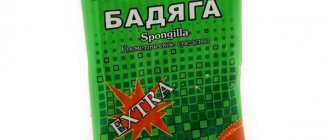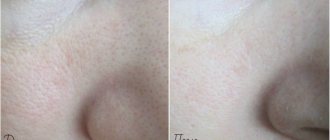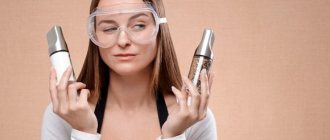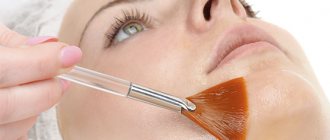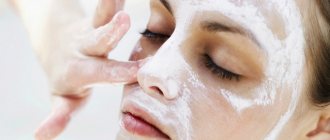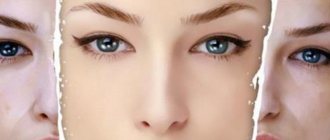Cosmetic products prepared with vinegar have an astringent, disinfecting, drying and soothing effect. Peeling with vinegar helps get rid of acne, blackheads, sebaceous plugs, cleanses pores and narrows their lumen. To prepare the compositions, apple cider vinegar is most often used, less often table or wine vinegar. At home, it is recommended to use low concentration ingredients. This will avoid unpleasant consequences, but will give a noticeable positive effect.
What is peeling, what types does it come in?
Peeling is the removal of the top stratum corneum to improve the appearance of the skin. This is a popular procedure among cosmetologists. It can be done by hardware (laser grinding), mechanical (scrubbing) or chemical (acids).
The acid or chemical version of exfoliation is widely used due to its availability and ease of implementation. Depending on the depth of penetration of the active substance, peelings are:
- Superficial;
- Median;
- Deep.
The last 2 are performed only by highly accredited plastic surgeons and dermato-cosmetologists. Most masters perform superficial exfoliation.
It’s certainly nice to be in the hands of a professional. But many are stopped by the price of beauty services in beauty salons. If you don’t want to attribute 1.5-6 thousand rubles. in one session, consider doing a facial upgrade at home.
Is it possible to do peeling at home?
Only cosmetologists are in a hurry to prove that peelings cannot be done at home, since the popularization of home-procedures leaves such “specialists” without work. In fact, this is a simple operation and can be performed without much expense.
Almost every beauty brand produces care lines with acids, and every tenth produces peeling emulsions. Acid concentrates are not a budget pleasure (min. $15 per 50 ml bottle). They contain mono-acids or complexes: glycolic, lactic, ferulic, tartaric, citric, malic azelaic, salicylic.
Advanced beauties are wondering whether it is possible to use affordable products in skin care - lemon juice or apple cider vinegar, since cult beauty brands make their products based on them?
Yes, but you need to carefully study the characteristics of specific ingredients.
Kinds
Vinegar peeling is an affordable and easy-to-use product that any housewife can use. It will help get rid of the thick layer of dead cells and restore the original silkiness and tenderness of your skin.
There are several types of vinegar peels, depending on the basis on which they are prepared, so you can easily resort to different variations of peeling at home:
- compresses;
- gommages;
- multi-layer rubbing.
Let's consider each of them separately.
Apple
To exfoliate with apple cider vinegar, you need to take the following ingredients::
- Apple vinegar;
- clean water;
- honey.
- Take vinegar and water at the rate of two tablespoons of the first product and half a liter of the second.
- Mix them well. Add one teaspoon of honey to the resulting mass and mix well again.
We recommend: What is facial peeling cream, how to make the composition at home and use it? Top 5 best products
Before applying the product to the face, the skin must be cleansed . To do this, remove makeup and wipe the skin of your face with cotton swabs soaked in tonic. Once everything is ready, you can begin the cleansing procedure itself:
- To do this, wet cotton pads with the product and apply the mixture evenly to your face.
- Leave on for ten minutes, after which rinse thoroughly.
Learn more about using apple cider vinegar for acid peeling in this video:
Dining room
- Take table vinegar and add clean boiled water to it at the rate of 1 serving of vinegar and 9 servings of water, so that you get a one percent solution.
- Next, take cotton pads and moisten them with the resulting solution, after which we cover the entire face with it, except for the area around the eyes.
- In exactly two minutes we will change the disks for new ones and wait the same amount of time.
- As soon as another two minutes have passed, wipe the skin of the face with a soda solution and apply a moisturizer.
After a day or two, the skin will begin to peel, that is, old cells will begin to fall off, releasing clean new ones. Thus, in a few days, while washing, all the dead cells will come off.
Grape
This product is not only an excellent means for cleansing the skin, but also a strong antioxidant that slows down the aging process. To prepare the peeling product you will need :
- ten milliliters of grape vinegar;
- twenty drops of salicylic acid;
- five milliliters of aloe juice.
- All ingredients must be mixed together, after which you can apply peeling to the facial skin in three stages using a sponge or cotton pad. This way you will have a three-layer film on your face.
- After seven minutes, the product must be washed off the face using a pre-prepared parsley decoction.
This procedure should be repeated two to three times a week for three months.
Balsamic
When peeling with balsamic vinegar, use pure, undiluted product.
For this:
- Take medical gauze, roll it up in several layers and soak it in two tablespoons of balsamic vinegar.
- Then the soaked gauze is applied to the skin for fifteen minutes.
- When the time is up, you need to remove the fabric.
- And after sixty minutes, wash your face with a clean sponge or washcloth.
- Finally, wipe your clean face with ice.
Wine
- To prepare wine peeling, you need to take one teaspoon of apple cider vinegar and three teaspoons of dry red wine.
- Mix everything and apply to the skin.
- After two minutes, repeat the procedure, and the third layer will need to be applied after another two minutes, after which you need to wait another three minutes.
- As soon as the time has expired, the face should be wiped with a weak soda solution.
- Finally, rinse your face with cold water and apply moisturizer.
We recommend: What types of peeling can be used at home for dry and sensitive facial skin? Best Recipes
Milky-fruity
- Take one tablespoon each of fresh, cool milk and freshly squeezed orange juice and one teaspoon of apple cider vinegar or wine vinegar.
- First, mix milk and orange juice, as a result the milk should curdle and turn into white flakes, as soon as this happens, add vinegar and mix everything thoroughly.
- Once the product is ready, it can be applied in a thin layer to the skin of the face.
- After five to seven minutes, rinse thoroughly with warm water and apply any moisturizer.
With added hydrogen peroxide
To prepare this cosmetic product you need to take:
- one tablespoon of hydrogen peroxide;
- a glass of boiled water;
- one tablespoon of vinegar.
- First, dilute the peroxide with water and mix, then add the acidic agent to the resulting mixture and mix everything thoroughly again.
- Next, apply to previously cleansed skin.
- Once the product is absorbed and dried, you need to make a nourishing mask prepared from one teaspoon of honey and two tablespoons of yogurt.
- After twenty minutes, wash it off thoroughly.
Cosmetological properties of apple cider vinegar
Vinegar is made from acetic, citric, malic or tartaric acid. Cheap options are synthetic concentrates diluted with water.
A fruit-based product has cosmetic value. It is made like this: apple juice or pulp is infused with water and sugar in a warm, dark place for 2-6 weeks.
Natural apple cider vinegar contains malic acid. By the way, cult cosmetics manufacturers often add it to their products. On the packaging this primitive component is called Malic Acid. Take a closer look, is it included in your favorite tonic?
Apple cider vinegar also contains calcium, beta-carotene, iron, amino acids and enzymes, but these benefits are not key when used for exfoliation. The period of contact of the product with the skin is less than 20 minutes. During this time, it will not have time to absorb all the useful minerals.
BENEFITS OF VINEGAR FOR APPEARANCE
The most common apple is actually so healthy that London doctors even joke: if everyone eats at least one of these fruits daily, it will put them out of work.
Using vinegar essence made from apples allows you to get a real cocktail of vitamins, minerals, enzymes and fruit acid (15%) for your skin. Sourdough is obtained by fermenting apples and reacting oxygen with bacteria.
In medicine it is used to treat joints and colds, to eliminate burns, cleanse the body, for various dermatological diseases, and insomnia.
To prepare peeling, they most often resort to diluted apple cider vinegar (60%), table and wine vinegar are slightly less popular.
In home cosmetology, apple peeling is valued for the beneficial properties of its components:
- Beta-carotenes are powerful antioxidants.
- Enzymes are accelerators of metabolic processes.
- Calcium - helps contract muscles and transmit nerve impulses.
- Fruit acid : weakens intercellular connections, eliminates horn cells.
- Acetic acid : dries problem and oily skin, evens out its structure and tone.
Indications and contraindications
Acetic facial peeling is recommended for:
- Bio- and photoaging;
- Visibility of the vascular network;
- Hyperkeratosis;
- Acne;
- Pigment spots;
- Stretch marks;
- Cellulite.
Do not use if you have a dehydrated tissue type, are prone to allergic reactions, or during pregnancy and breastfeeding.
We recommend: How to make a PEELING MASK FOR THE FACE + recipes according to skin type
Effect after peeling. What skin problems does this procedure help solve?
Malic acid helps against a whole range of skin problems:
- Blackheads, acne, enlarged and clogged pores. American dermatologists have proven that acne develops when the natural outflow of sebum is disrupted. Receptors in the dermis synthesize lipids, which are normally released from the pores and moisturize and protect the surface of the epidermis. But this mechanism goes astray if the layer of dead cells is too thick. Then sebum accumulates in the pores and mouths of the hair follicles, causing subcutaneous acne. When bacteria begin to multiply in these sebaceous plugs, the wen turns into inflamed, “white-headed” pimples. The acid has a keratolytic effect, it destroys intercellular connections in the stratum corneum, and renews the epidermis, normalizes the process of epithelization in the excretory ducts of the sebaceous glands. It also has activity against bacteria that cause inflammation on the face.
- Dry skin. The moisturizing effect of malic acid is something beyond comprehension. But, it evens out the skin's hydrobalance no worse than its famous friend - hyaluronic. If the stratum corneum is very thick, moisturizing creams, even the most expensive ones, do not work; they only nourish dead cells. Peeling removes the stratum corneum and improves the natural mechanism of nutrition of the dermis, freeing the sebaceous ducts.
- Wrinkles, uneven relief, post-acne, small scars. Malic acid has a powerful Anti-age effect. With age, the natural renewal of the skin decreases and it needs additional care. Peeling not only removes fine wrinkles and other textural problems through exfoliation, but also stimulates cellular regeneration.
- Pigment spots, marks after wounds and acne, freckles. To completely get rid of hyperpigmentation, one procedure is not enough. But a course of peelings will even out your skin color.
Are there any contraindications?
Acid acts magically on the skin, but, unfortunately, this pleasure is not available to everyone. There are a number of contraindications to peeling:
- Cuperosis or capillary mesh on the face. The peeling composition can penetrate into the deep layers of the epidermis and aggravate the vascular problem. Couperous skin tolerates exfoliation with mandelic acid more easily.
- Skin damage, open wounds. Well, everyone understands that it is forbidden to apply acid to open damage. If you have the patience to do the procedure, smear the wound with Vaseline, silicone makeup primer, or cover it with a band-aid.
- Herpes in the acute stage. Peeling provokes microtraumas of the epithelium, they become susceptible to the virus, and the herpes infection can spread.
- Individual hypersensitivity reaction to acidic agents.
- Pregnancy. There are no studies proving the safety of exfoliators during pregnancy.
PROS AND CONS OF APPLE PEELING
When applied to the face, it helps achieve the following results:
- Neutralizes redness and inflammation;
- Prevents the development and appearance of pimples;
- Cleanses pores;
- Evens out tone;
- Whitens and refreshes;
- Makes skin elastic and soft.
Apple peeling is used for both the face and body, and gives the following effect:
- Anti-cellulite. Eliminates “orange peel”, tightens hips, buttocks and stomach during weight loss.
- Preventive . Vinegar wraps help improve blood circulation and keep the skin of your feet youthful.
- Smoothing . Tightens the relief, when applied as a course, removes spots, scars, wrinkles and stretch marks.
- Antiseptic . Dries and soothes, resists viruses and mycoses.
Do not forget that you will have to take some precautions:
- The homemade solution should be generously diluted with water to avoid burns. Do not use salon products containing 30% vinegar.
- To dilute, you can take boiled water at room temperature.
- If you dilute 1 tablespoon of fermented apples in 2 glasses of water, you get a solution suitable for beginners.
- A preliminary allergy test in a small, inconspicuous area is required.
- As you get used to it, the concentration of the base ingredient increases. At the same time, the duration of the procedure is reduced.
- A course of 8-10 procedures, therefore, can begin with 10-15 minute masks, but will definitely end with a 5-minute mask.
- Normal skin can be treated with this peeling weekly; for very oily skin, once every 3-4 days is suitable.
How to make an apple cider vinegar peel?
To maximize the effectiveness and safety of home peeling, you need to carry out all manipulations with caution.
- Beginners are advised to start peeling with 3-10% acid. There is no exact recipe; go by the concentration indicated on the label.
- Vinegar 3% can be applied undiluted if the product concentration is 6% and mixed with water 1:1.
- Always prepare a new composition before each procedure.
- The composition of home peeling can be enriched with citric, salicylic or ascorbic acid. This will enhance its effect.
- If you want to play it safe, mix vinegar with moisturizer or honey and apply a peeling mask to your skin. Then the effect will be gentle.
Rules for home peeling
The skin must be properly prepared before the procedure. It is better to clean in 2 stages:
- Two-phase product, hydrophilic oil or micellar water;
- Foam for washing.
IMPORTANT. Bar soap is not recommended for cleansing facial skin in general and before peeling, in particular. It has an alkaline ph and disrupts the balance of the skin.
- Apply the vinegar composition to the skin, avoiding the area around the eyes, moles, sides of the nose, and lips.
- For the first time, it is recommended to keep the product on for about 5 minutes. If the skin tingles and burns a little, this is normal. To relieve the burning sensation, a fan is used in salons. If it bakes like hell and is unbearable, which rarely happens with 3% exfoliators, wash your face without waiting 5 minutes.
- Rinse off the product with cool water, apply a generous layer of moisturizer.
If you peel again, try lengthening the session to 20 minutes.
In salons, the acid composition is immediately neutralized before releasing the client. Home peeling with a 3-10% product does not require neutralization. But, if the skin is very red, bakes and itches, prepare a solution: 1 glass of water + 1 tsp. soda, wipe your face, rinse with clean water.
Reviews from patients and advice from cosmetologists
Since this type of peeling is very popular among women of different ages and many of them have tried it on themselves, the discussion on this issue is quite lively. They are ready to share not only their impressions and results, but also give the necessary advice:
- For example, Annet recommends strictly observing the proportions, otherwise various injuries may occur (burns, skin damage, etc.).
- And Milao doesn't really trust homemade peeling products. She says it's better to go to a salon and get a cleansing procedure done there, as only a professional peeling can solve your problems.
- Dariya, on the contrary, constantly uses apple peeling and is very pleased. Her skin after the procedure becomes soft, silky and elastic.
There are also different opinions among cosmetologists: some do not consider peelings using apple cider vinegar to be effective, while others, on the contrary, support those who use this method to cleanse their facial skin. Many of them use materials based on the same acetic acid to carry out peeling programs.
For more serious cleansing programs - intermediate ones - you should only contact specialists ; in no case should you do such manipulations at home, otherwise there will be unpleasant consequences.
So, as we see, using peeling with apple cider vinegar is a completely accessible, inexpensive and effective means of cleansing the facial skin of dead skin particles. The main advantage of this method is that you can do it yourself at home at any time convenient for you.
Apple cider vinegar has a very gentle effect on the epidermis and cleanses it without causing any problems, so you get a renewed, fresh and beautiful face.
How to care for your skin after peeling?
It is optimal to schedule the procedure for the evening so that the skin is renewed and calmed overnight. You need to leave your face alone and minimize additional injury.
The positive effect after exfoliation is observed only when the recovery period is over.
Prohibited: yawning widely, stretching the skin, touching with hands, pinching eyebrows, applying makeup (less than 24 hours).
Simple rules that will help restore your skin after peeling with maximum comfort:
- If the skin is stretched or thinned, apply cream with panthenol or aloe, they speed up healing.
- During the healing period, avoid comedogenic components in cosmetics: talc, castor, coconut, cocoa oil, petroleum jelly. The pores of cleansed skin are open and can easily become clogged due to poor quality products.
- If there are peelings, do not remove with a scrub with large abrasives. It is better to use a Korean rolling sheet or scrub and microparticles.
NOTE. All procedures that force exfoliation of the epidermis contribute to the thinning of the stratum corneum. Thin skin becomes susceptible to UV radiation, and the risk of age spots increases significantly. If you decide to do home peeling, keep in mind that after the procedure you must use creams with an SPF filter. Excessive insolation causes sensitization and photoaging and hyperpigmentation, so cosmetologists advise using products with SPF on days with high solar activity, even for those who do not use acid care.
Frequently asked questions and answers about peeling
How often can the procedure be performed at home?
Do not peel with vinegar more than 2 times a week. Treat normal to dry skin in a similar manner once every seven days.
Besides peeling, the preservative has many other benefits. Read, for example, how to wash your hair with vinegar so that your hair is shiny and looks healthy.
How long does it take for skin to recover compared to chemical peeling in a salon?
| Homemade superficial peeling | Salon chemical peeling |
| Peels do not hurt, you feel a slight tingling or burning sensation | You feel discomfort during the healing period, including tingling and burning for 30 – 60 minutes. |
| No recovery time needed. | Recovery takes 7 days and remains pink for 6 weeks after treatment. |
| The skin remains pink, peels a little, but is covered up with makeup | The face may become swollen, red, and itchy. |
Is it possible to use acetic acid (essence) 70%
Author's note
Sherkova Olga
Acetic acid is used only in diluted form. The concentrated composition of apple essence can cause a severe burn.
To whiten age spots, use essence, diluting with water in a ratio of 1:7. This is the best 9% solution for home superficial peeling.
Reviews of peelings with apple cider vinegar
- For the last 5 years I have been rinsing my hair with apple cider vinegar after washing. It softens them well and adds shine. But I only started using it on my skin for a few months (I was forced by age, 36, after all). I don’t understand why I used to reject acid treatments, I look younger than 5 years ago, the hated pigmentation on my chin is gone.
- I think it is important to warn that the turn is 6-12 months. After peeling, the skin becomes immune to the initial dose of acid. And you get used to the effect of a cleansed, healthy, shiny face. I already apply undiluted 10% vinegar, and still it’s not enough. I ordered 20% glycolic acid at the salon, on the recommendation of a dermatologist. I am waiting.))
- I'm hooked on this product. I smear it on my cuticles, it perfectly softens and prevents growth, and now I do trim manicures less often.
Apple cider vinegar is a true dark horse in skin care. It’s nice when such proven “grandmother’s” products can be used in a new way, for example, to do “fashionable” peeling. And it’s even more pleasant when they give the desired effect.
